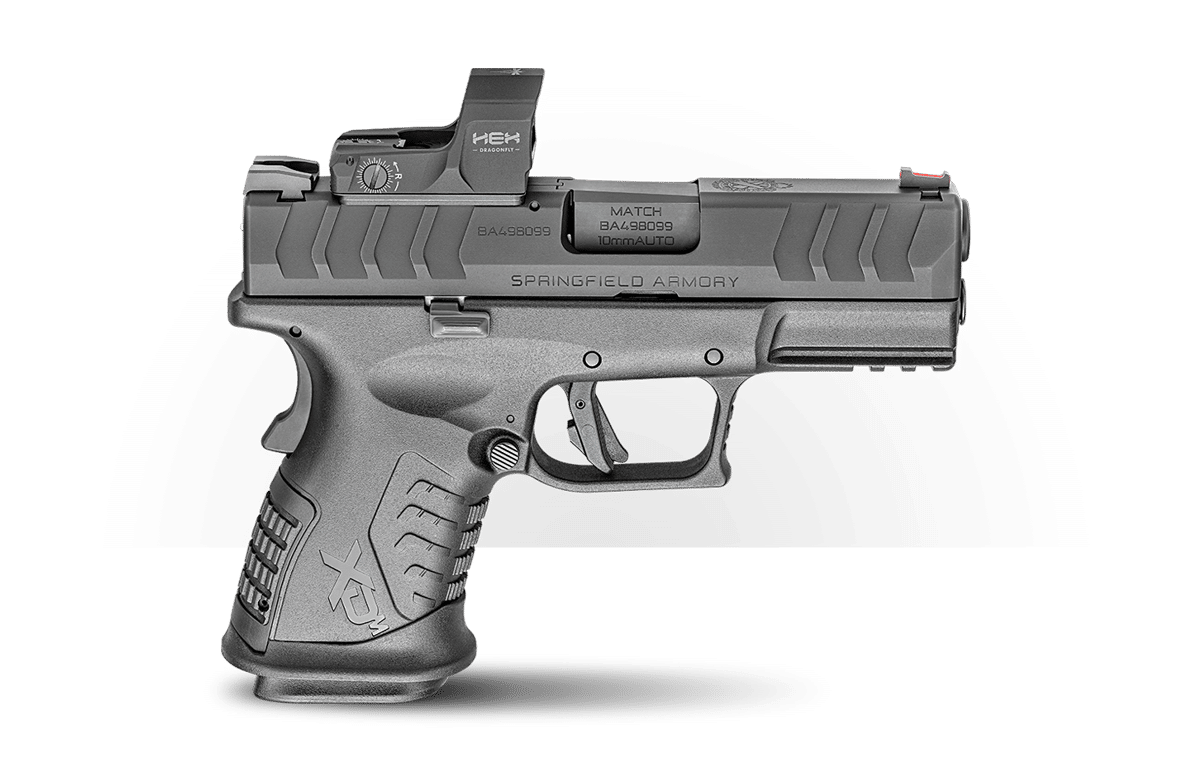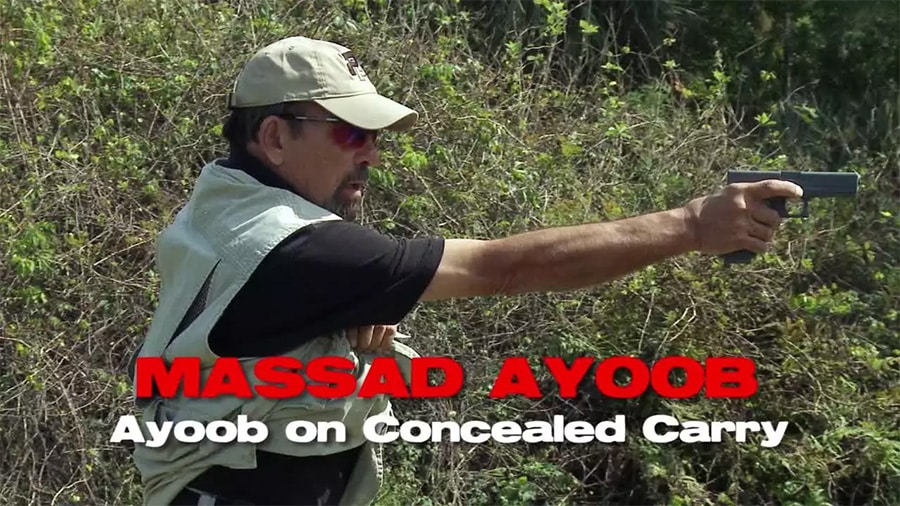Nonetheless, strong side hip carry seems to remain the single most popular mode.
Lets look at some ways to enhance efficiency in that regard.
First, we have to consider the cover garment.
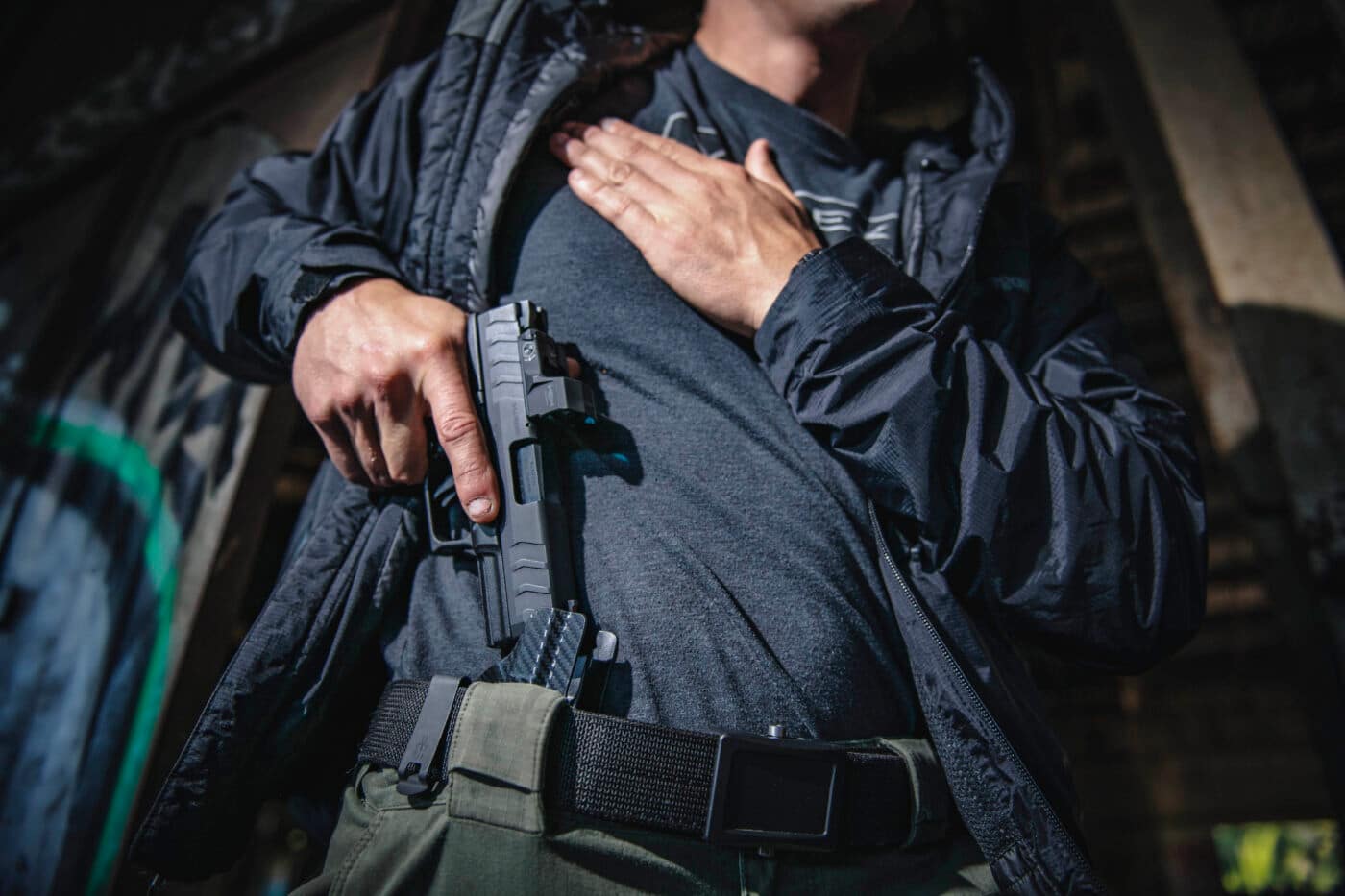
When drawing a pistol like this XD-M Elite 3.8” Compact OSP 10mm from concealment with an open jacket, make sure you have the fundamentals down.
These break down into two categories: open front and closed front.
This article will focus on open-front styles.
These may include jacket, vest or shirt.
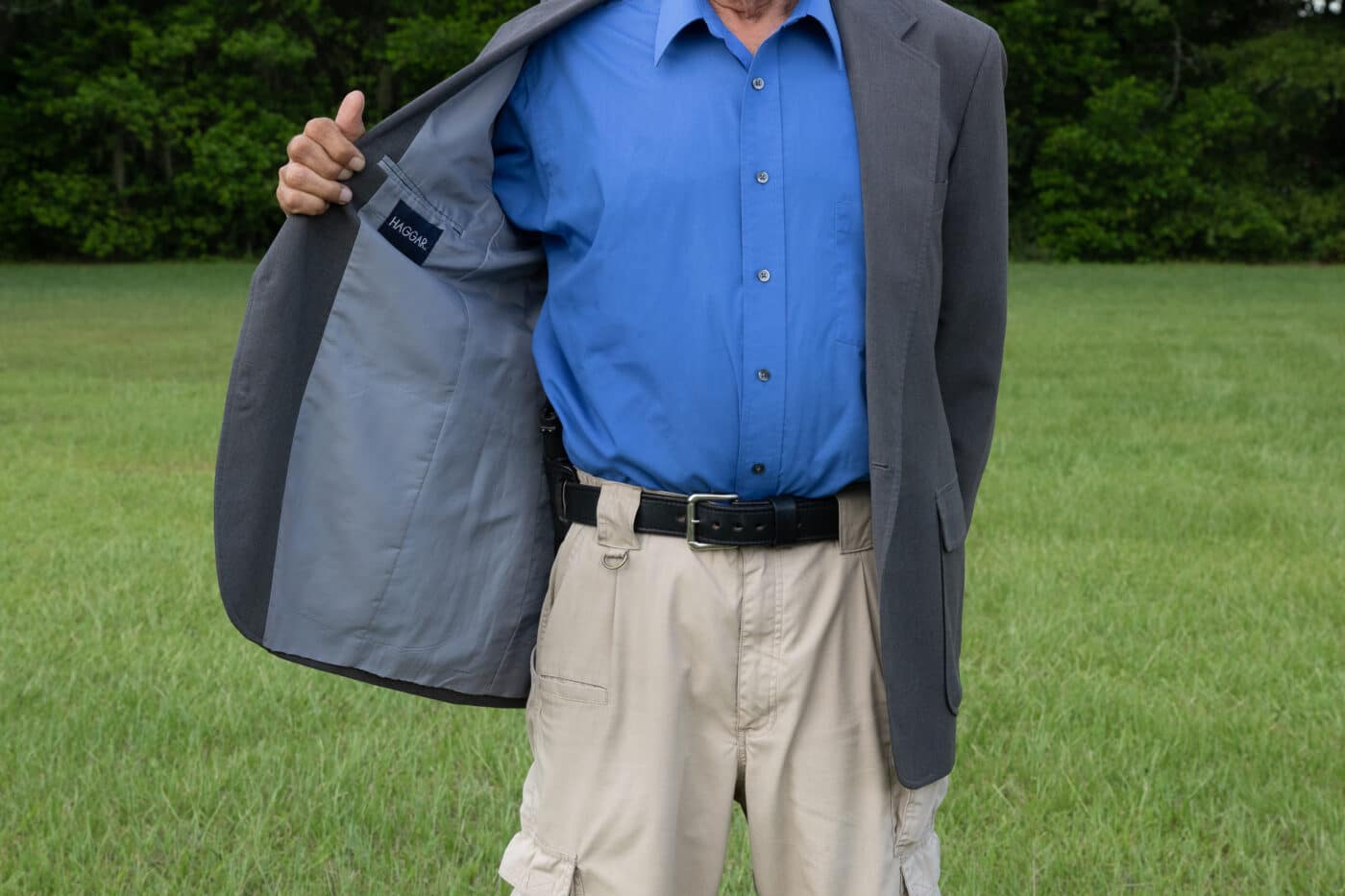
Here’s aSpringfield Mil-Spec .45, flat to the body in a Mitch Rosen OWB holster, carried at “3:30.”
Advantages
The majority of belt holsters are designed for dominant hand-side carry.
All ranges that allow drawing loaded guns from holsters allow strong side hip carry.
However, some host ranges still do not allow AIWB even at IDPA matches.
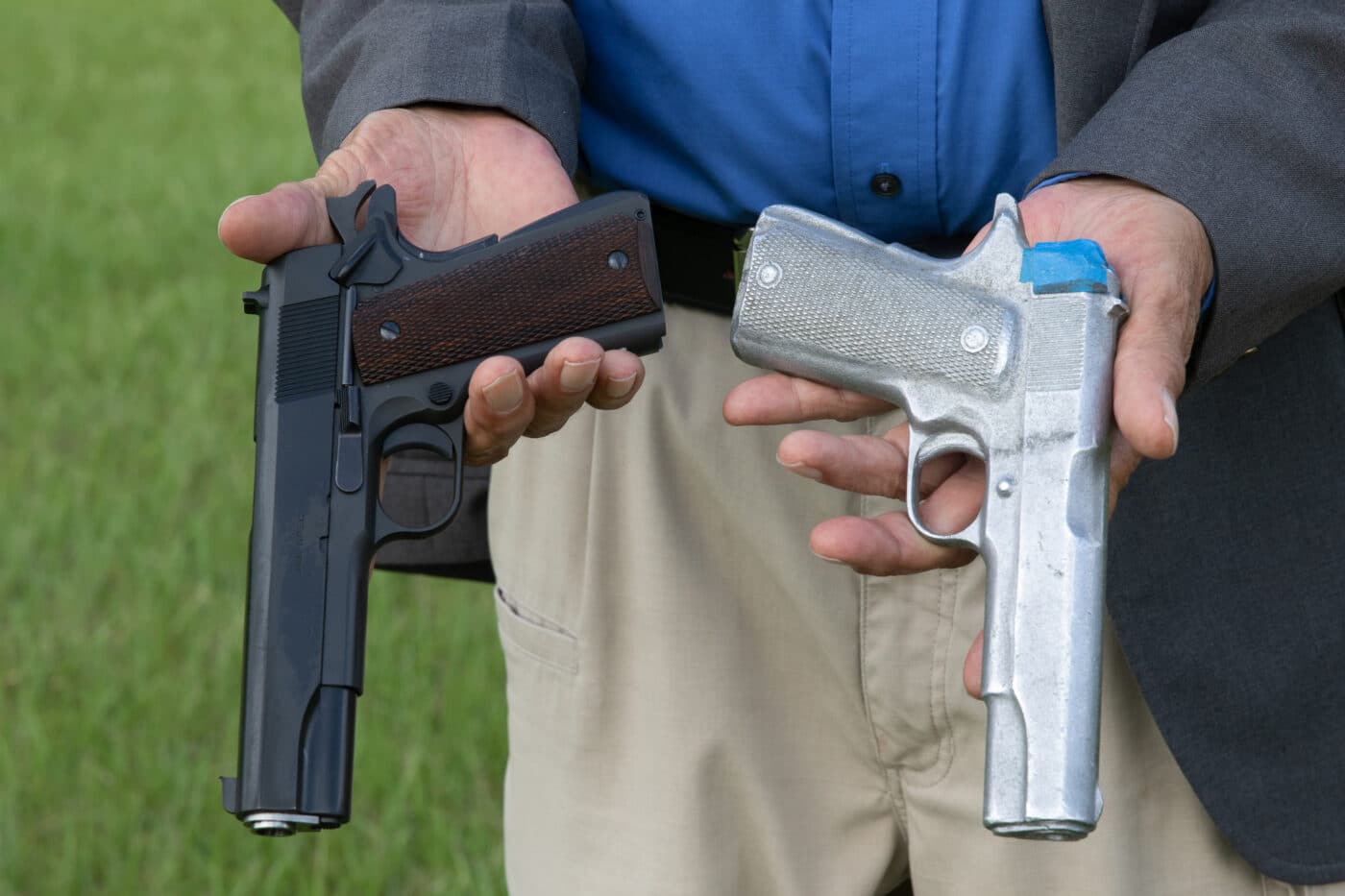
For safety, and peace of mind of the photographer, draw demonstrations were done with this Odin Press dummy version of 1911A1 pistol.
Many private shooting schools restrict holsters to strong side hip as well.
This makes hip draw slightly slower.
There is also the matter of wounded defender draws.
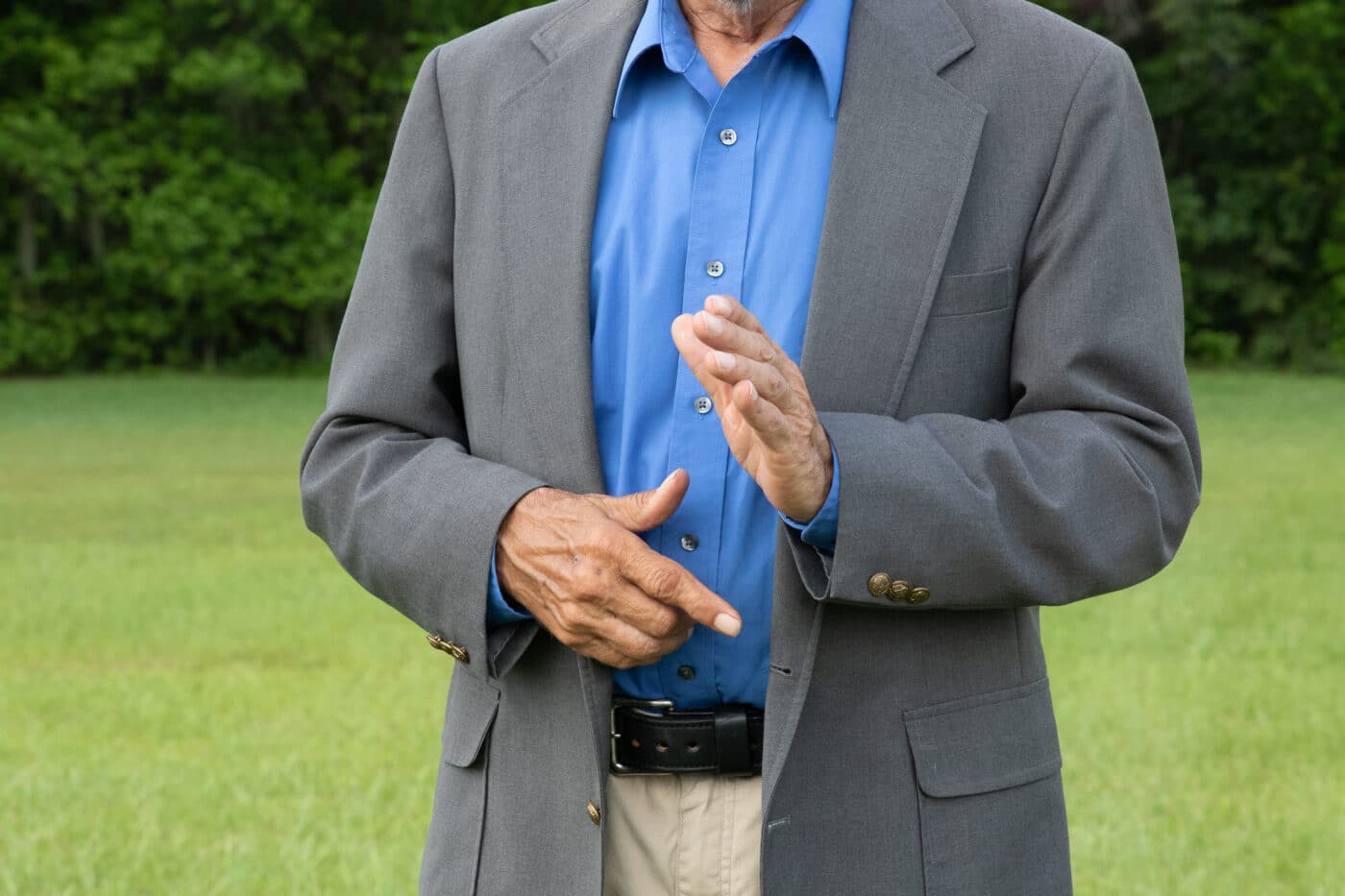
Hand positions at the start of the draw: wrist of the support hand near solar plexus with fingertips pointed toward the threat; three fingertips of gun hand in light contact with the abdomen and the trigger finger straight.
Picture the human body in cross-section, at the waist.
Front centerline the navel, or common belt buckle placement is 12 oclock.
The lumbar spine is at 6 oclock.
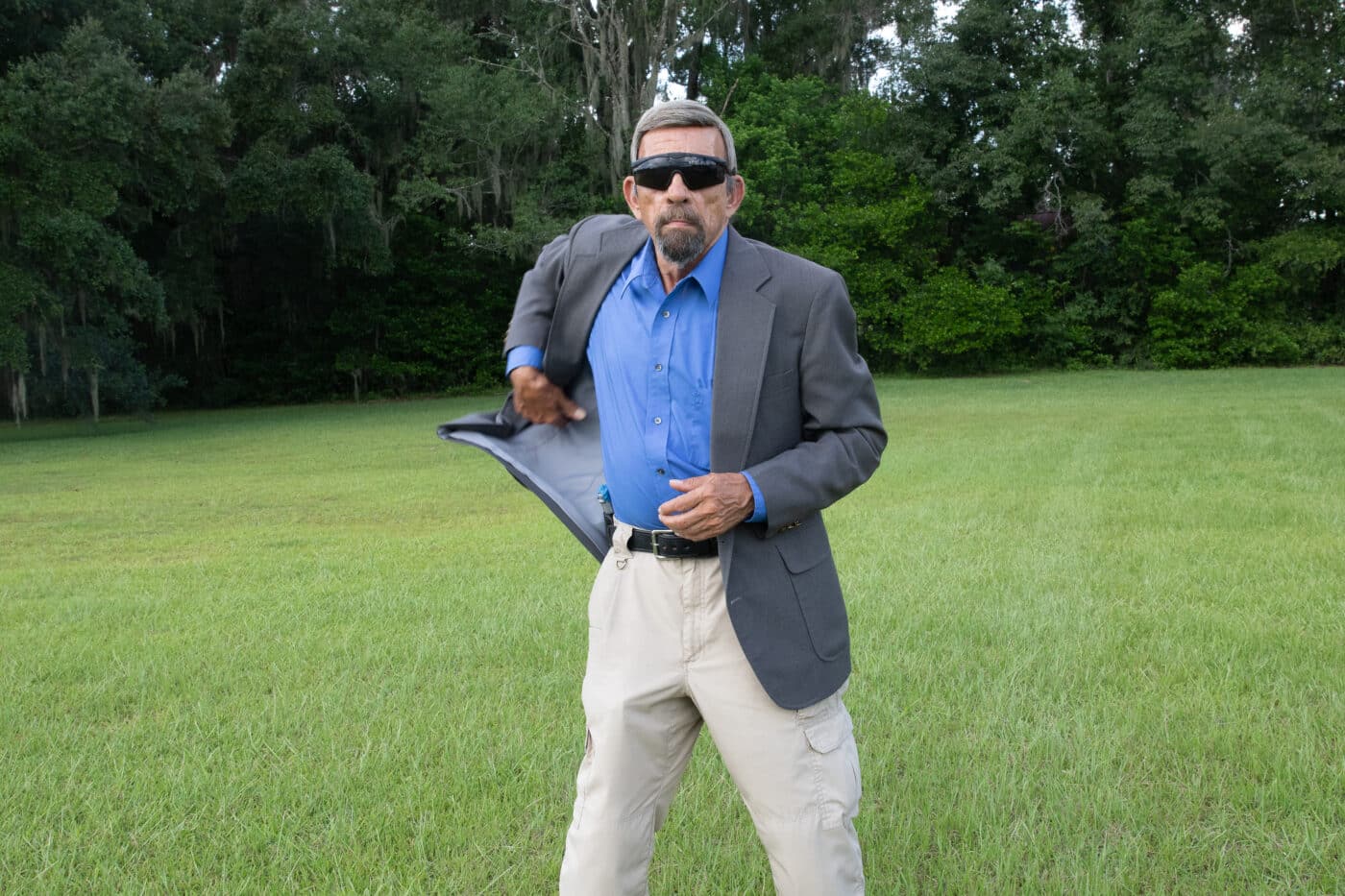
After throwing the coat to the rear, the author is able to drive his hand down to the gun and begin the draw.
The right hip is 3 oclock, and 9 oclock marks the left hip.
Thus, in strong-side hip carry, the right-handed pistol-packer is carrying somewhere around 3 oclock.
Now, lets get more, uh, minute.
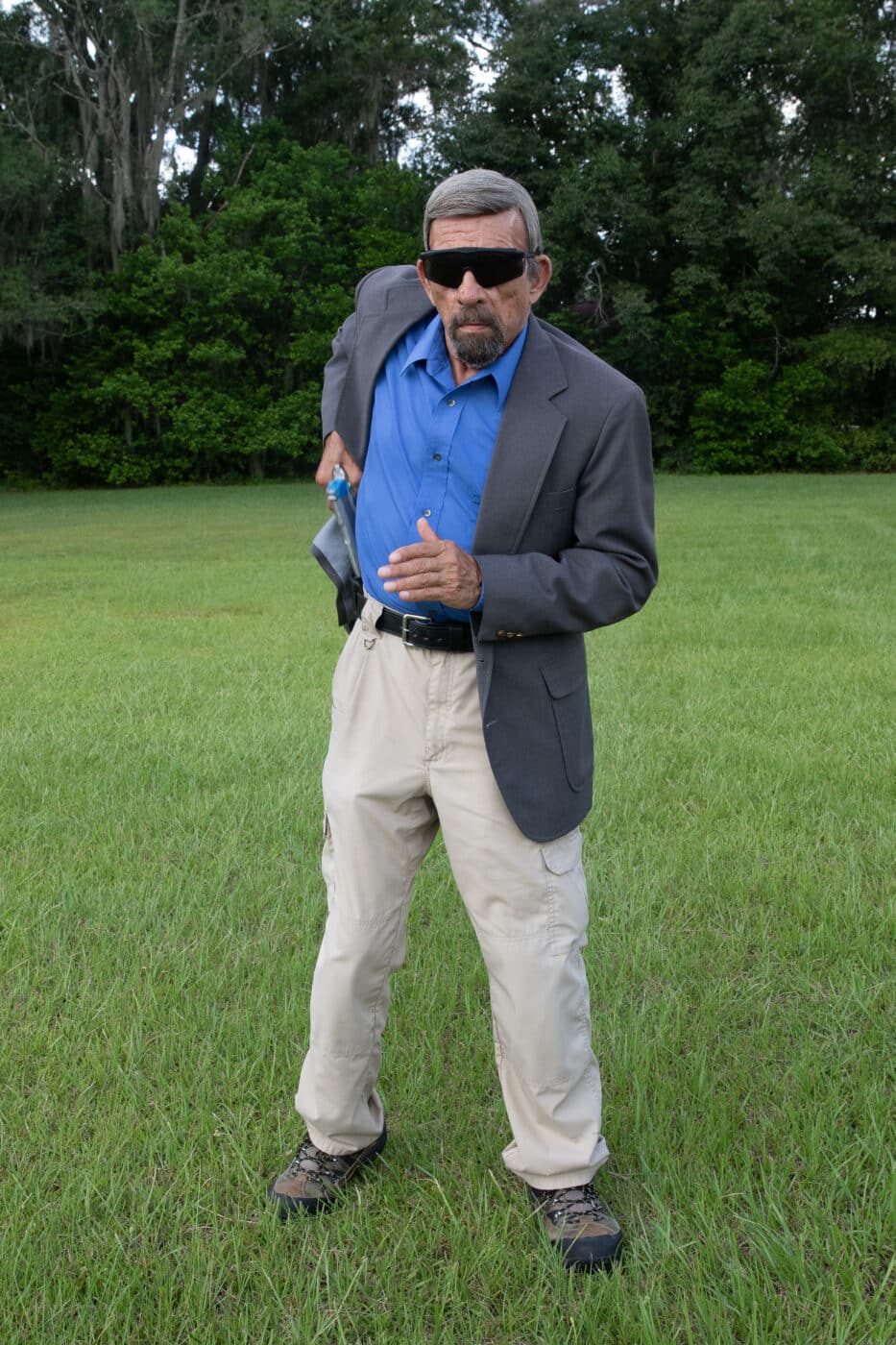
The little finger and heel of the hand sweep the coat to the rear while the hand drives down onto the pistol.
Carrying atexactly3 oclock can be problematic for concealed carry.
This greatly improves concealability.
There are several approaches to accessing the pistol holstered beneath an open-front garment.
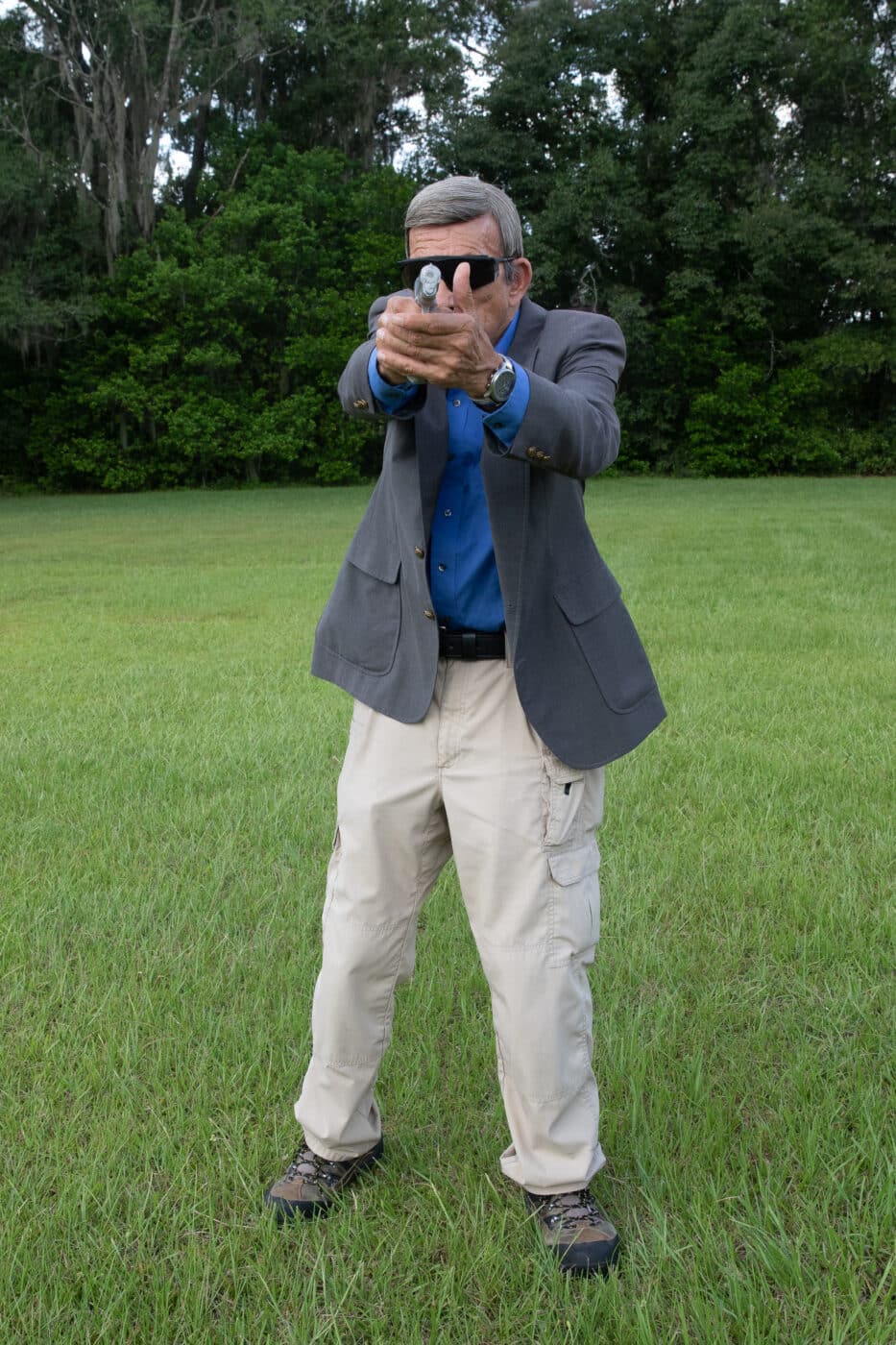
After a proper draw sequence, the gun is now on target to stop the threat.
IDPA, the International Defensive Pistol Association, is the concealed carry sport.
And of course, it wouldnt work while seated, let alone seat-belted.
It will work seated, seat-belted, on your back or on your belly.
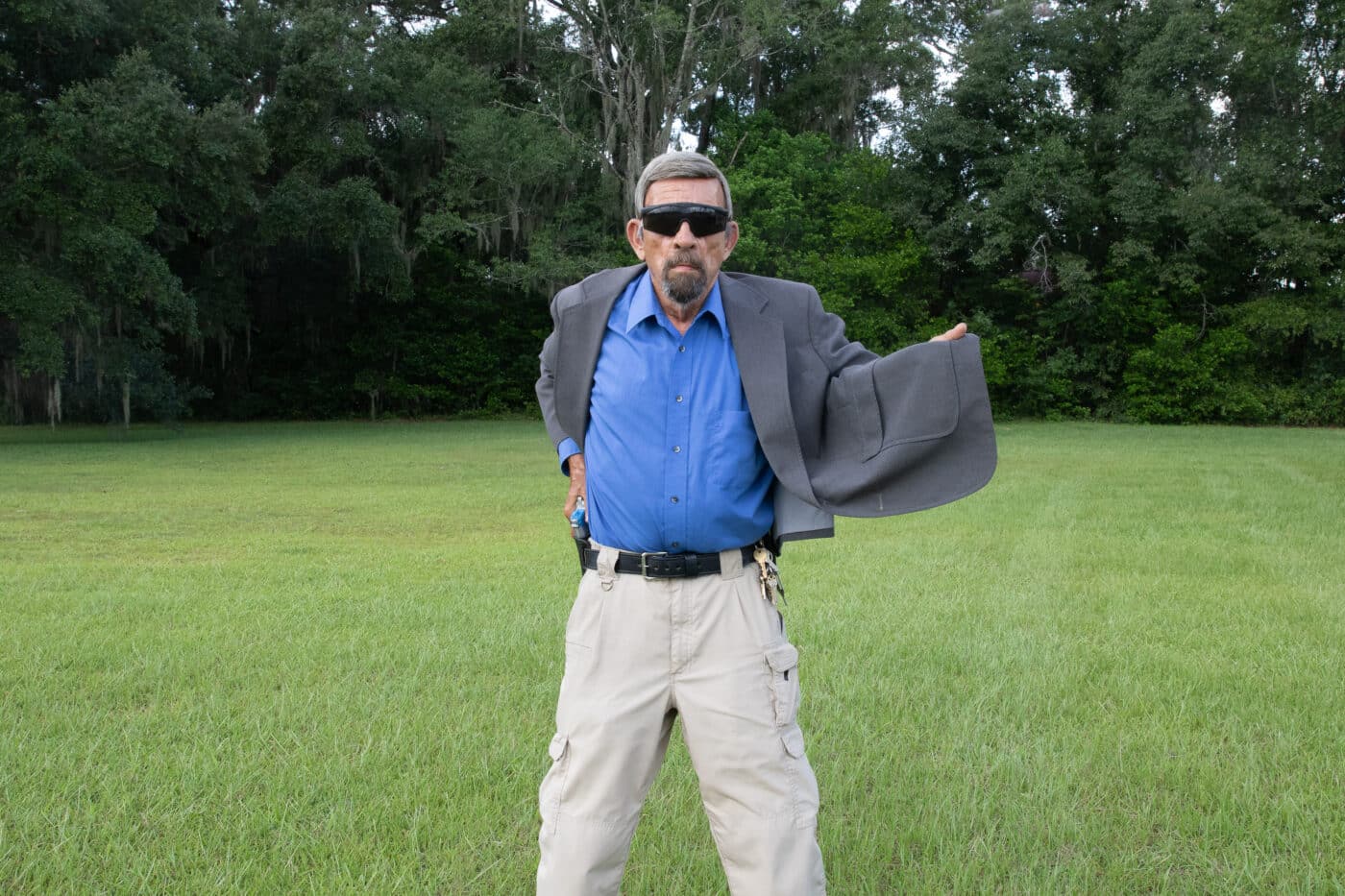
This is the “Dracula draw,” first conceptualized mid-20th century by Chic Gaylord, re-popularized later by Jack Manfre.
It is demonstrated in my Concealed Carry video available at Panteao Productions.
If there is a fast-closing assailant, you might fire from here and get a reasonable hit.
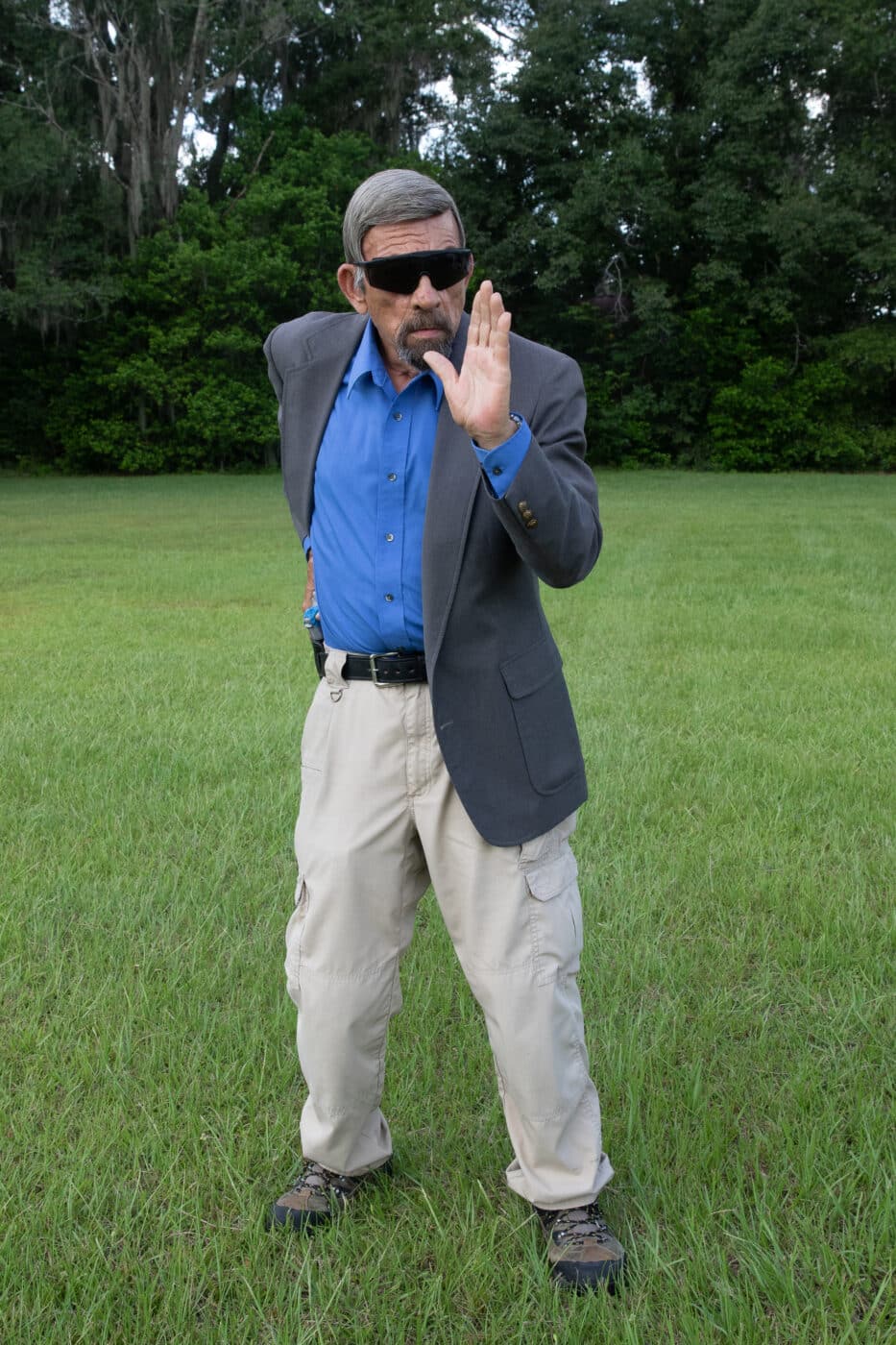
The author’s suggested support hand position at beginning of the draw expedites its use to block or parry duringclose-contact combatives.
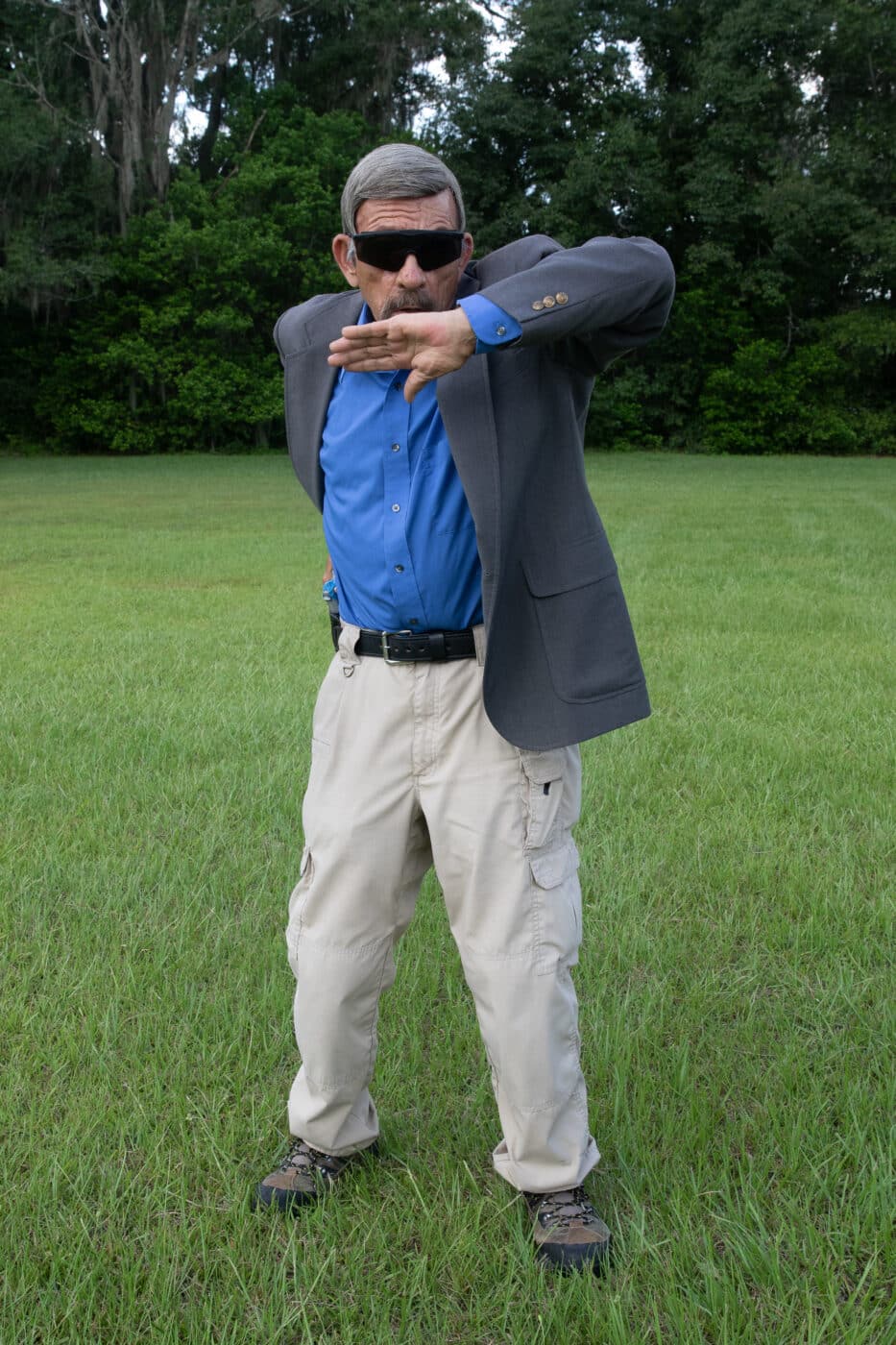
The support arm can also be used to elbow-block an attacker’s punch.
